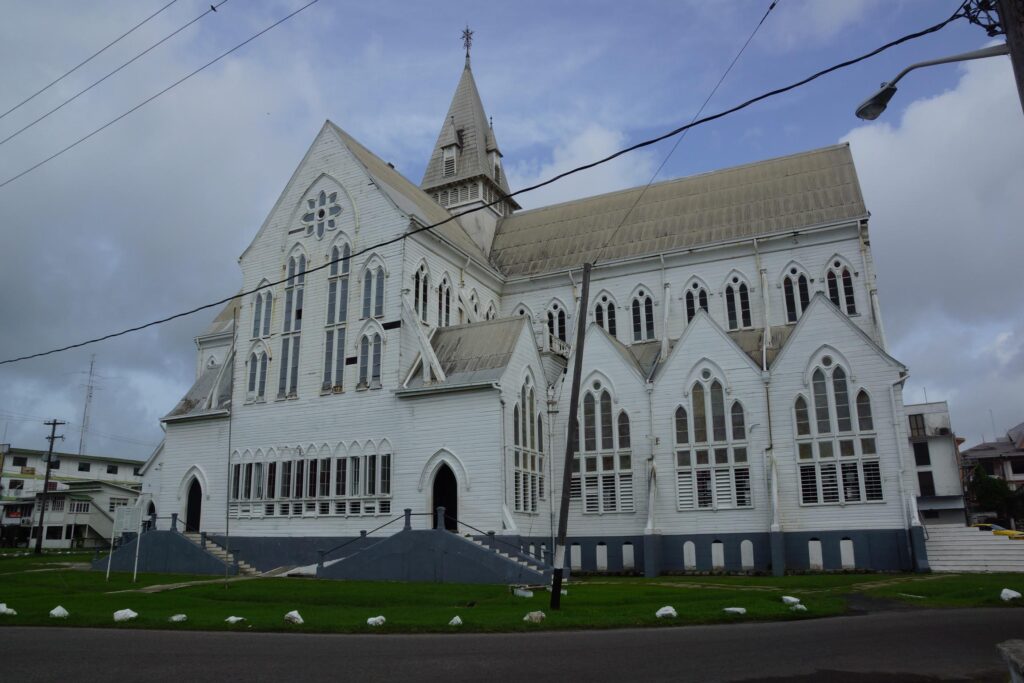Described by its own tourism association as „Conradian“ and „raw“, Guyana is a densely forested country with a troubled history of political instability and interethnic tension, wide spread corruption and economic mismanagement.
In the morning it takes us an hour to get to the airport where again the handler is not ready. Amazingly we are the only plane on the airport – so he can‘t be overworked! Finally we take-off and after an hour‘s flight we land in Georgetown, Guyana. Handling is ok here and to get to the hotel it takes us over an hour. First impression of the whole place: not very appealing. In the hotel we wait another hour for lunch (delicious chicken burger; the soup of the day is ok) and then the webmaster and Herbie decide to take a cab to downtown and walk back. After a few minutes it is clear that we also take a cab back – this is really a dump and people don‘t look too friendly!!
We visit the Anglican, Gothic-style St. George‘s Cathedral, said to be the world‘s tallest wooden building. It was completed in 1892 and was built with a native hardwood called green-heart. The distinctive neo-Gothic Town Hall (1868) with its 75 ft. tower where in the colonial-period wives apparently watched for their husband‘s ships to come into port. It is actually a shame in what kind of shape this building is – simply not taken care of. But this is like whole Georgetown looks to us! The market looks so filthy that we decide not even to enter it!
We find a taxi that brings us back to the hotel; some relaxing, watching TV (well done Roger and Stan in Paris!). Dinner is at the local Pizza Hut; we just could not find anything descent. And we enjoy it before going back to the hotel where we enjoy an El Dorado MX (local Rum – some of the best in the world) on the terrace in a cool breeze.
Guyana has an area of 214,969 sq km (83,000 sq mi), about the size of Great Britain, and has about 700‘000 inhabitants.
The name Guyana is an Amerindian word meaning Land Of Many Waters.
We are known as the country of Six People- Africans, Amerindians, Chinese, East Indians, Europeans and Portugese.
The Warrou people were the indigenous inhabitants of Guyana. The Dutch, English, and French established colonies in what is now known as Guyana, but by the early 17th century the majority of the settlements were Dutch. During the Napoleonic wars Britain took over the Dutch colonies of Berbice, Demerara, and Essequibo, which became British Guiana in 1831.
Slavery was outlawed in 1834, and the great need for plantation workers led to a large wave of immigration, primarily of East Indians. Today, about half of the population is of East Indian descent and about 36% are of African descent.
In 1889, Venezuela voiced its claim to a large swath of Guyanese territory, but ten years later an international tribunal ruled the land belonged to British Guiana
British Guiana became a Crown colony in 1928, and in 1953 it was granted home rule. The country gained full independence on May 26, 1966. With independence, the country returned to its traditional name, Guyana.
In 1978, the country gained worldwide attention when American religious cult leader Jim Jones and 900 of his followers committed mass suicide in Jonestown, Guyana.
